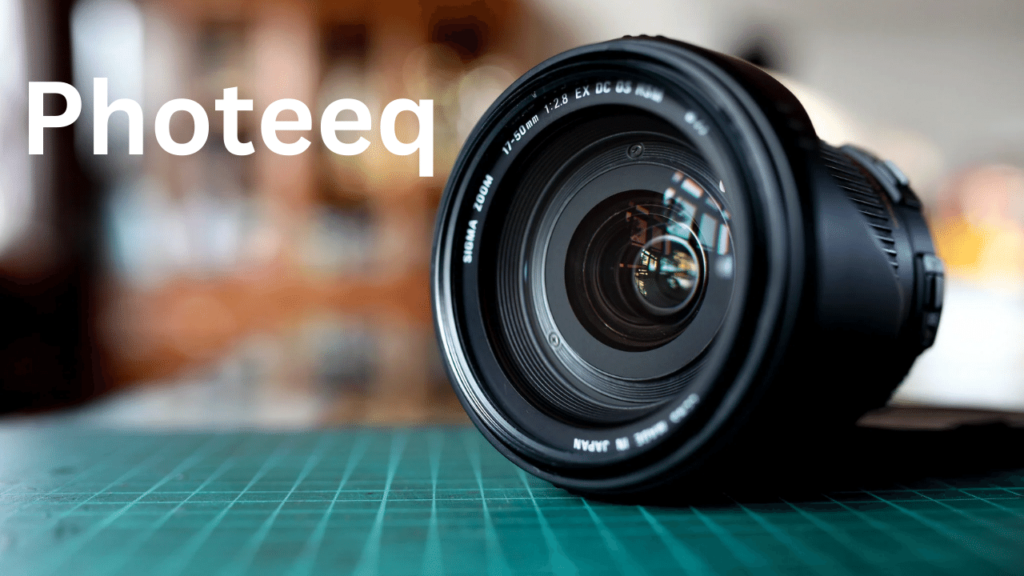In the ever-evolving landscape of digital technology, one innovation stands poised to redefine the boundaries of imaging and photography. “Photeeq” emerges as a groundbreaking development, promising to revolutionize the way we capture, process, and interact with digital images. This comprehensive exploration delves into the core of Photeeq, unraveling its technological prowess, potential applications, and the transformative impact it holds for various industries.
The Genesis of Photeeq
The inception of Photeeq can be traced back to a growing need for advanced imaging solutions that transcend conventional limitations. Traditional digital imaging technologies, while having made significant strides over the past decades, often grapple with challenges such as limited dynamic range, resolution constraints, and inadequate processing capabilities for real-time applications. Photeeq was developed as an answer to these challenges, embodying a leap forward in digital imaging technology.
At its core, Photeeq incorporates a suite of innovative algorithms and hardware advancements that dramatically enhance image quality, dynamic range, and processing speed. This technology is not just an incremental update to existing systems but a complete overhaul that reimagines the potential of digital images.
Breaking Down the Technology
Photeeq’s technological foundation is built on a multi-faceted approach to image capture and processing. Firstly, it employs a novel sensor design that significantly increases light sensitivity and dynamic range. This allows for capturing images with unparalleled detail in both brightly lit and shadowed areas, a common stumbling block for many current imaging systems.
Moreover, Photeeq integrates advanced machine learning algorithms to optimize image quality in real-time. These algorithms can intelligently adjust settings such as exposure, focus, and color balance on the fly, based on the specific conditions of the scene being captured. This adaptive capability ensures that Photeeq-equipped devices can produce superior images in any environment.
Another pivotal aspect of Photeeq’s technology is its processing efficiency. By leveraging the latest in chip design and computational photography, Photeeq can process images at speeds previously deemed unattainable. This not only enhances the user experience by reducing wait times for image processing but also opens up new possibilities for applications requiring real-time image analysis, such as autonomous vehicles and real-time surveillance.
Transformative Applications
The implications of Photeeq’s advanced imaging capabilities are vast and varied, promising to impact several industries profoundly.
Photography and Videography
For professional photographers and videographers, Photeeq offers the ability to capture images and footage with unprecedented detail and dynamic range. This can significantly enhance the quality of content produced, providing creators with the tools to realize their visions without technical constraints. Furthermore, the enhanced processing speeds allow for more efficient workflows, enabling faster turnaround times for projects.
Security and Surveillance
In the realm of security, Photeeq’s real-time processing and superior image quality can significantly enhance surveillance capabilities. By providing clearer images under a wide range of conditions, it can improve the accuracy of facial recognition algorithms and other forms of automated analysis. This could lead to more effective monitoring and threat detection, enhancing safety in public spaces and sensitive environments.
Healthcare
The healthcare industry stands to benefit immensely from Photeeq’s imaging advancements. In medical diagnostics, the ability to capture highly detailed images in real-time can improve the accuracy of various imaging techniques, such as endoscopy and ultrasound. This could aid in the early detection and treatment of conditions, ultimately leading to better patient outcomes.
Automotive and Transportation
For the automotive sector, Photeeq’s real-time image processing and enhanced dynamic range can be pivotal in developing advanced driver-assistance systems (ADAS) and autonomous vehicles. By providing more accurate and detailed visual information, vehicles can make better decisions in real-time, improving safety and efficiency on the roads.
Challenges and Future Directions
Despite its potential, the adoption of Photeeq technology faces several challenges. High production costs, integration complexities with existing systems, and the need for widespread industry acceptance are significant hurdles. However, ongoing research and development efforts are focused on addressing these issues, aiming to make Photeeq more accessible and cost-effective.
Looking ahead, Photeeq is poised for continuous improvement. Future iterations of the technology will likely see enhancements in sensor design, algorithm efficiency, and processing power. Additionally, as industries begin to recognize and leverage Photeeq’s capabilities, we can expect its influence to grow, driving innovation and opening new frontiers in digital imaging.
Conclusion
Photeeq represents a paradigm shift in digital imaging technology, offering unparalleled improvements in image quality, processing speed, and versatility. Its potential applications span a wide range of industries, from photography and videography to healthcare and automotive, promising to enhance both the quality and efficiency of imaging-related tasks. Despite facing challenges in adoption and integration, the future of Photeeq is bright, heralding an era of innovation and transformation in the digital imaging space. As this technology continues to evolve and mature, it will undoubtedly leave a lasting impact on the way we capture and interact with the visual world.
Frequently Asked Questions about Photeeq
What is Photeeq?
Photeeq represents a cutting-edge digital imaging technology designed to significantly enhance the quality, dynamic range, and processing speed of digital images. It incorporates advanced sensor designs, machine learning algorithms, and computational photography techniques to improve how digital images are captured, processed, and analyzed.
How does Photeeq work?
Photeeq works by integrating several key technological advancements. Firstly, it uses novel sensor technology that increases light sensitivity and dynamic range, allowing for the capture of images with greater detail in both high and low-light conditions. Secondly, it employs sophisticated machine learning algorithms that adjust camera settings in real-time, optimizing image quality for any given scene. Lastly, Photeeq leverages modern computational methods to process images rapidly, facilitating applications that require quick or real-time analysis.
What are the potential applications of Photeeq?
Photeeq’s advanced imaging capabilities make it suitable for a wide range of applications across various industries. These include professional photography and videography, where it can enhance content quality; security and surveillance, where it can improve monitoring accuracy; healthcare, where it aids in diagnostics through better imaging techniques; and the automotive sector, where it supports the development of safer ADAS and autonomous driving technologies.




















